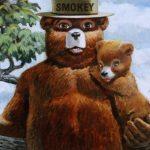Dads have learned to cook since the 1950s!Changes To Your Favorite Childhood Book Reflect How Much Society Has Changed Since 1946
Changes To Your Favorite Childhood Book Reflect How Much Society Has Changed Since 1946
As a child, you may have had a favorite book that you read over and over again. Perhaps it was a classic like "The Cat in the Hat" or "Charlotte's Web." However, if you were to pick up that same book today, you may notice some changes that reflect how much society has changed since it was first published in 1946.
For example, if you were to read "The Cat in the Hat" today, you may notice that the mother in the story is no longer portrayed as a stay-at-home housewife. Instead, she is shown as a working mother who leaves her children in the care of a babysitter. This change reflects the fact that more women are now in the workforce and that traditional gender roles have shifted.
Similarly, if you were to read "Charlotte's Web" today, you may notice that the language used to describe the animals is more sensitive and inclusive. For example, the term "spider" is no longer used as a derogatory term, and the animals are referred to using gender-neutral pronouns. This change reflects the growing awareness and acceptance of diversity and inclusivity in society.
Other changes you may notice in your favorite childhood book include updated illustrations, revised storylines, and more diverse characters. These changes reflect the fact that society is constantly evolving and that our understanding of the world around us is constantly expanding.
Overall, the changes to your favorite childhood book reflect how much society has changed since 1946. While some of these changes may be subtle, they are important in reflecting the progress we have made as a society towards greater inclusivity, diversity, and acceptance.





